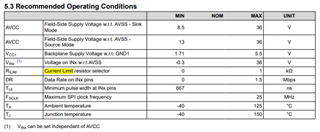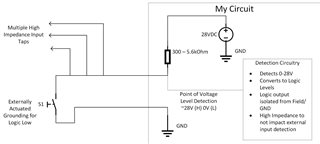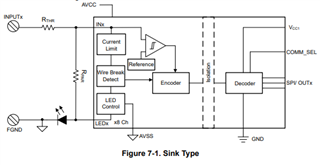Tool/software:
I am designing a circuit with a series of relatively strong pullups to 28V that can be FET-switched to ground, and I need to detect logic levels between 28V and ~0V through isolation (this is not a IEC 61131 application), and the ISO1228 looks like a promising fit. I don't need LEDs or wire break detection and plan to use parallel outputs not SPI. However I also need to limit the current draw of the inputs to the ISO1228 circuit as well as maximize the input impedance of the input circuit, and the sneak path of the recommended 13kOhms Rpar is making that difficult. What is the purpose of the Rpar resistor and can it be omitted? If I ground the LED pins and select appropriate values of Rthr and Rlim can I get the effective input impedance of my circuit inputs into the 100's of Kohms?




